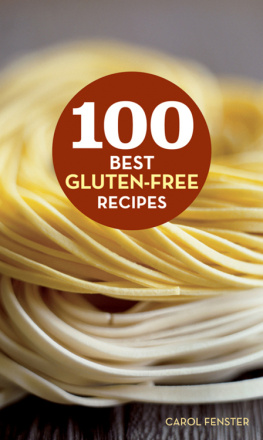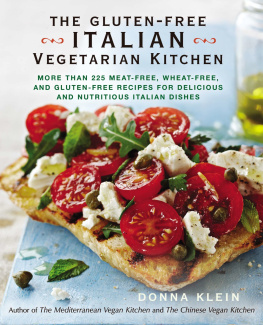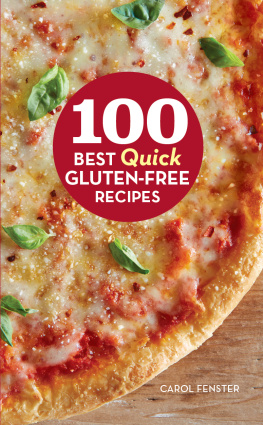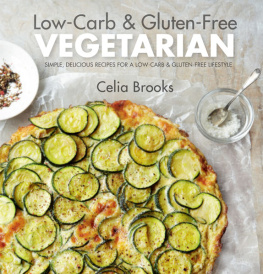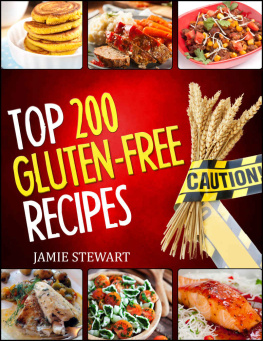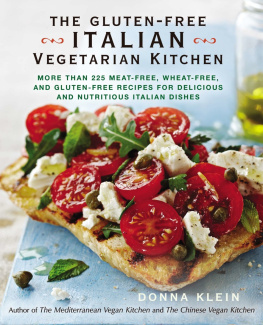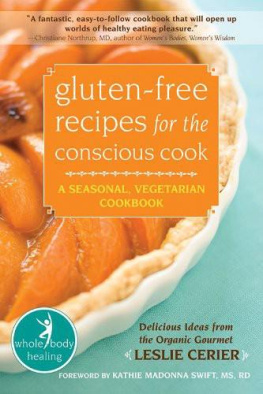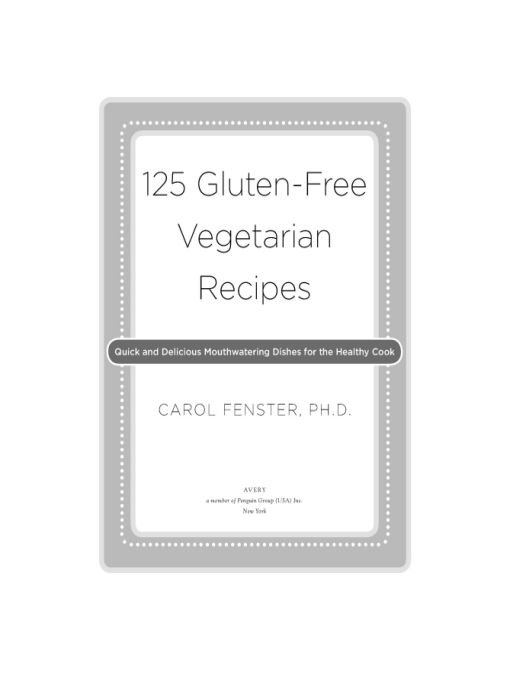Table of Contents
To my wonderful family
Larry, Brett, Helke, Keene, Romi, and Cole.
I love you.
Acknowledgments
I am especially grateful to my husband, Larry, who is always the first person to taste each recipe. If he says, This needs more work, doesnt it? then its back to the kitchen. Thanks also to the family, friends, neighbors, professional colleagues, attendees at my cooking school classes and speaking engagements, and total strangers who visited my trade show booths and book signings: All of you provided extremely useful feedback on these dishes. I am also grateful to the early experts in plant-based diets whose work inspired me to write this gluten-free cookbook for those who want more plant-based options.
The people who volunteered their kitchens, time, and patience, and the venturesome palates of their friends and family members to give me constructive feedback on the recipes or help me in other ways include: Janet L. Armil; Desiree Castillo; Susan Cox-Gilbertson, Bobs Red Mill; Sally Ekus; Sherrie Glogosh; Lesley Jacobs, Regional Sales Manager, Bobs Red Mill; Melissa McLean Jory, MNT, Nutrition Therapy & Exercise Science, glutenfreeforgood.com; Cindy Koller-Kass, President, Greater Cleveland Celiac Association, CSAI USA; Andrea Levario and Pablo Douros; Susan M. Piergeorge, M.S., R.D.; Genevieve Potts; Tracy Roberts; Lori Sobelson, Program Director, Bobs Red Mill; Virginia Schmuck; Cecile Weed, founder of Orange County, California, CSA/USA; and Margie Winter. Thanks to all for your very helpful input.
Several companies provided products for me to use as I wrote this cookbook; thanks to my wonderfully supportive colleagues at Bobs Red Mill and Pamelas, as well as Cream Hill Estates, Gifts of Nature, Marys Gone Crackers, and Udis Gluten-Free Foods.
Special thanks to my marvelously inspirational agent, Lisa Ekus, who is so generous with her guidance and support. Lisa, I am so lucky to have you and your superb staff on my team.
And finally, to my great team at Averyeditor Miriam Rich; Megan Newman, who suggested this book; and cover designer Andrea Ho. I truly appreciate your support with the book and your belief in the importance of a plant-based diet for the gluten-free community.
Introduction
Many of us can remember when gluten-free and vegetarian were two terms seldom seen in print, much less used in the same sentence. Today, gluten-free and vegetarian diets are two of the fastest-growing food movements in the nation. We need more options for those who combine both diets into their lifestyles, and thats why I wrote this book. I believe we all deserve delicious, nutritious choices when we eat, and this book provides that mouth-watering variety for the gluten-free vegetarian.
Statistics on Vegetarianism and Gluten-Free Diets
Vegetarianism is on the rise. Three percent of Americans follow a plant-based diet. About a million of them are vegan, meaning they consume no animal products at all, according to a 2008 Harris poll commissioned by Vegetarian Times magazine. Another ten percent of adult Americans, nearly 23 million, say they largely follow a vegetarian-inclined diet. This same poll indicates that of the meat eaters surveyed, five percent, or nearly 12 million people, are definitely interested in pursuing a vegetarian diet.
Kids are getting into the act, too. About one in two hundred American kids is vegetarian, according to a 2009 study by the Centers for Disease Control and Prevention. And sales of vegetarian food are expected to grow to $1.7 billion in 2012, up half a billion from 2005.
The media are also paying more attention to plant-based diets. We hear about the Great American Meatout on the first day of spring, the White House vegetable garden, Michael Pollans books, the Meatless Mondays movement, vegetarian restaurants springing up around the country, and the movie stars who write cookbooks about their plant-based lifestyles.
Gluten-free diets are no small potatoes either (pardon the vegetarian pun). Avoiding gluten was once rare and thought to be unnecessary, and little mainstream food (or compassion) was available. Today, experts estimate that eight percent, or about 24.5 million people, shop for gluten-free food. Sales of gluten-free food increased seventy-four percent from 2004 to 2009, and the market is expected to reach $2.6 billion in 2012. Since there are no cures for the conditions that require a gluten-free diet, experts expect this growth to continue.
Why Follow a Plant-Based Diet?
America is showing greater interest in plant-based diets for health considerations but also for environmental reasons. There are many benefitscertain of them more important to some people than to othersand they are likely to include the following:
1. Maintain a healthy body weight
2. Reduce the risk of cardiovascular disease
3. Increase energy and overall well-being
4. Improve digestion with the higher fiber of plants and grains
5. Lessen the risk of food-borne illnesses from undercooked or contaminated dairy, fish, or meat
6. Reduce environmental pollution of chemical and animal waste from farms
7. Spare animals from perceived inhumane treatment in factories and on farms
Why Follow a Gluten-Free Diet?
In case youre not familiar with the various medical conditions addressed by the gluten-free diet, here is a quick summary. You will find more information about these conditions in the Appendix under Resources.
People with wheat allergies must avoid all forms of wheat (including spelt) because they can suffer severe and sudden reactions, such as anaphylaxis, which requires immediate medical attention. Wheat allergies affect only a small percentage of people, but reactions are serious and can be fatal. Allergies are diagnosed by a food allergist.
Persons with celiac disease, an autoimmune condition, must avoid wheat and other gluten-containing grains such as spelt, barley, rye, kamut, and triticale because the protein in gluten damages the lining of their small intestines, inhibiting proper absorption of nutrients from food. This condition affects one percent, or about 3 million, Americans and is diagnosed by a gastroenterologist.
Another form of gluten intolerance is known as non-celiac gluten intolerance (or gluten sensitivity; the terms are often used interchangeably), which experts such as Dr. Alessio Fasano of the University of Maryland Center for Celiac Research believe may be six to seven times more prevalent than celiac disease. Gluten sickens these patients with symptoms ranging from migraines, nausea, rashes, and stomachaches to a host of other symptoms varying in intensity. I am in this category: gluten gives me brain fog, fatigue, and nasal congestion, often leading to sinus infections. An allergist typically diagnoses this condition.
Other conditions may be treated with a gluten-free diet, although it is important to note that the diet is only part of the overall treatment in these cases, not the cure in and of itself. One of the better known of these conditions is autism, which affects about one in 110 children. The gluten-free diet remains controversial for autism, and there is little research to support its effectiveness, yet many parents of autistic children praise the diet anecdotally.
Combining Gluten-Free and Vegetarian Diets


